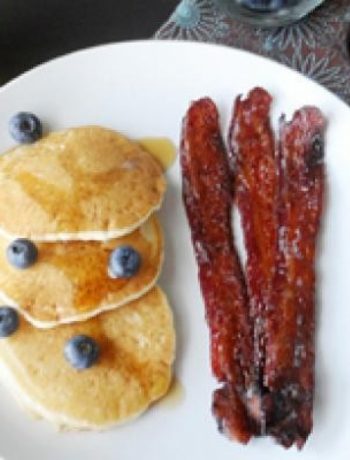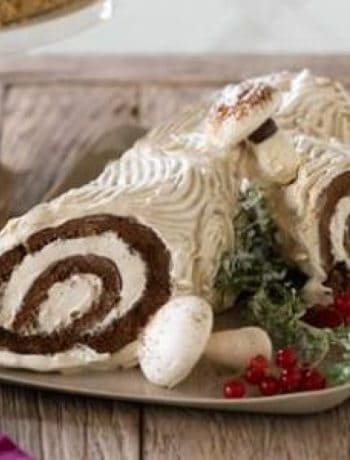
TipWhy Do We Celebrate Christmas on Dec. 25?
There are several reasons Christmas is celebrated on Dec. 25. The date is nine months after March 25, a day recognized by Christians as Annunciation. It was the day Mary was told she would was having a baby. The nine months that follow are an approximation of Jesus’ birth. Dec. 25 also coincides with pagan Winter Solstice celebrations like Saturnalia’ and Dies Natalis Solis Invicti. Since they were historically celebrated around that time of year there was precedent for holiday festivities during this time of year.
Read More
1 of 6
Next: What Does the Name ‘Christmas’ Mean and What Is the Meaning of Christmas?
TipWhat Does the Name ‘Christmas’ Mean and What Is the Meaning of Christmas?
Christmas is a shortened from the words “Christ’s mass.” It’s derived from the Middle English word “Cristemasse” which has Greek, Hebrew and Latin origins. Christmas is an annual holiday that honors the birth of Jesus Christ. It is celebrated by Christians around the world and is regarded as an important religious and cultural holiday.
Read More
2 of 6
Next: How Can We Celebrate Christmas?
TipHow Can We Celebrate Christmas?
Christmas is traditionally celebrated in many ways and celebrations vary across cultures. In the days leading up to Christmas, people usually put up special decorations including colorful lights and evergreen trees. Gifts are often placed under the tree and exchanged on Christmas day among loved ones. Large meals are also typically served as part of the celebration as well.
Read More
3 of 6
Next: How to Store Eggs
TipHow to Store Eggs
Eggs should keep a consistent and low temperature. This is best achieved by placing their carton in the center of your fridge. The eggs should also remain in their original packaging to avoid the absorption of strong odors. It is wise to follow the “best by” date to determine overall freshness, but eggs can be tested by simply dropping them into a bowl of water. Older eggs will float while fresh eggs will sink. This is due to the size of their air cells, which gradually increase over time. Cooked eggs have a refrigerator shelf life of no more than four days, while hard-boiled eggs, peeled or unpeeled, are safe to consume up to one week after they’re prepared.
Read More
4 of 6
Next: How to Cook Eggs
TipHow to Cook Eggs
The beauty of an egg is its versatility. Eggs can be cooked in a variety of ways. Here are some tips in accomplishing the four most common preparations. Scrambled: Whip your eggs in a bowl. The consistency of your scrambled eggs is a personal preference, though it seems like the majority of breakfast connoisseurs enjoy a more runny and fluffy option. In this case, add about ¼ cup of milk for every four eggs. This will help to thin the mix. Feel free to also season with salt and pepper (or stir in cream cheese for added decadence). Grease a skillet with butter over medium heat and pour in the egg mixture. As the eggs begin to cook, begin to pull and fold the eggs with a spatula until it forms curds. Do not stir constantly. Once the egg is cooked to your liking, remove from heat and serve. Hard-boiled: Fill a pot that covers your eggs by about two inches. Remove the eggs and bring the water to a boil. Once the water begins to boil, carefully drop in the eggs and leave them for 10-12 minutes. For easy peeling, give the eggs an immediate ice bath after the cooking time is completed. For soft-boiled eggs, follow the same process, but cut the cooking time in half. Poached: Add a dash of vinegar to a pan filled with steadily simmering water. Crack eggs individually into a dish or small cup. With a spatula, create a gentle whirlpool in the pan. Slowly add the egg, whites first, into the water and allow to cook for three minutes. Remove the egg with a slotted spoon and immediately transfer to kitchen paper to drain the water. Sunny Side Up/Over Easy/Medium/Hard: For each of these preparations, you are cracking an egg directly into a greased frying pan. For sunny side up, no flipping is involved. Simply allow the edges to fry until they’re golden brown. To achieve an over easy egg, flip a sunny side up egg and cook until a thin film appears over the yolk. The yolk should still be runny upon serving. An over medium egg is flipped, fried, and cooked longer until the yolk is still slightly runny. An over hard is cooked until the yolk is hard.
Read More
5 of 6
Next: How to Freeze Eggs
TipHow to Freeze Eggs
Eggs can easily be frozen, but instructions vary based on the egg’s physical state. As a general rule, uncooked eggs in their shells should not be frozen. They must be cracked first and have their contents frozen. Uncooked whole eggs: The eggs must be removed from their shells, blended, and poured into containers that can seal tightly. Uncooked egg whites: The same process as whole eggs, but you can freeze whites in ice cube trays before transferring them to an airtight container. This speeds up the thawing process and can help with measuring. Uncooked yolks: Egg yolks alone can turn extremely gelatinous if frozen. For use in savory dishes, add ⅛ teaspoon of salt per four egg yolks. Substitute the salt for sugar for use in sweet dishes and/or desserts. Cooked eggs: Scrambled eggs are fine to freeze, but it is advised to not freeze cooked egg whites. They become too watery and rubbery if not mixed with the yolk. Hard-boiled eggs: As mentioned above, it is best to not freeze hard-boiled eggs because cooked whites become watery and rubbery when frozen.
Read More
6 of 6
Next: Why Do We Celebrate Christmas on Dec. 25?
To make your pancakes gluten-free, you have to use alternative flour, which alters the taste and consistency of the pancake. A mix of four different wheat-free flours creates a texture and flavor that feels more like traditional pancakes. Serve them with a berry compote instead of maple syrup for a weekend breakfast treat. What to buy: Tapioca flour, also known as cassava flour, is made from the root of the cassava plant (a.k.a. yuca) and is often used as a thickening agent. Sorghum flour is made from the sorghum grain and has a texture similar to whole-wheat pastry flour. Oat flour is technically gluten-free but is often processed in facilities with gluten-containing grains, so make sure the label specifies gluten-free oat flour. Teff or tef flour is ground from tiny teff seeds, dissolves easily into baked goods, and acts as a binding agent. It has a mildly nutty flavor and is high in protein and carbohydrates. Xanthan gum is produced from corn sugar and is used as a thickener, stabilizer, and dough binder. You can find it in the baking aisle of natural foods stores. Guar gum is made from the seeds of the guar plant and is used in small amounts as a thickener and stabilizer. This recipe was featured as part of our gluten-free recipe slideshow. Round out these pancakes with Braised Sweet Sausage and some Apple-Lemon-Ginger Juice.
Ingredients:
- 2 cups fresh berries, such as blueberries, raspberries, or huckleberries
- 1 cup freshly squeezed orange juice
- 1/2 cup granulated sugar
- 1/4 teaspoon vanilla extract
- 3/4 cup tapioca flour
- 1/2 cup sorghum flour
- 1/2 cup gluten-free oat flour
- 1/2 cup teff flour
- 3 tablespoons granulated sugar
- 1 tablespoon baking powder
- 2 teaspoons xanthan gum
- 1 teaspoon fine salt
- 1/2 teaspoon guar gum
- 1 1/2 cups whole milk
- 2 large eggs
- 1 teaspoon vanilla extract
- 4 tablespoons unsalted butter (1/2 stick), melted and slightly cooled
- Vegetable oil, for cooking
Instructions:
- Place all of the ingredients in a medium saucepan, stir to combine, and bring to a boil over medium heat. Reduce the heat to low and simmer, stirring occasionally, until the compote has thickened, about 1 hour. Remove from the heat and let cool slightly.
- Sift the tapioca flour, sorghum flour, oat flour, teff flour, sugar, baking powder, xanthan gum, salt, and guar gum into a large bowl, discarding any coarse bits left in the sifter; set aside.
- Whisk the milk, eggs, and vanilla together in a medium bowl until the eggs are broken up and the mixture is evenly combined. Add the melted butter and whisk to incorporate.
- Make a well in the center of the flour mixture, pour in the milk mixture, and stir with a rubber spatula until just combined. If you’re using the berry compote, scoop a few tablespoons into the pancake batter and stir to evenly incorporate.
- Let the batter stand at room temperature for at least 1 hour before cooking. (Preferably, let the batter rest overnight in the refrigerator.)
- Heat a large nonstick frying pan or griddle or a seasoned cast iron skillet over medium heat until hot, about 4 minutes. Test to see if the pan is hot enough by sprinkling a couple of drops of cold water in it: If the water bounces and sputters, the pan is ready to use.
- Once the pan is ready, use a paper towel to rub it with a thin coating of vegetable oil. Ladle the pancake batter by the 1/4 cup into the pan. Cook the pancakes undisturbed until the bottoms are lightly golden brown, about 3 to 4 minutes. Carefully flip the pancakes, give each a gentle press with the spatula to slightly flatten, and cook until the bottoms are golden brown, about 3 to 4 minutes more. Flip the pancakes one more time and cook until they’re no longer wet in the center, about 3 to 4 minutes more. Remove to a plate and repeat with the remaining batter.
- Serve with the berry compote, if using.
- Share on Facebook
- Share on Reddit
- Save (63)




No Comments